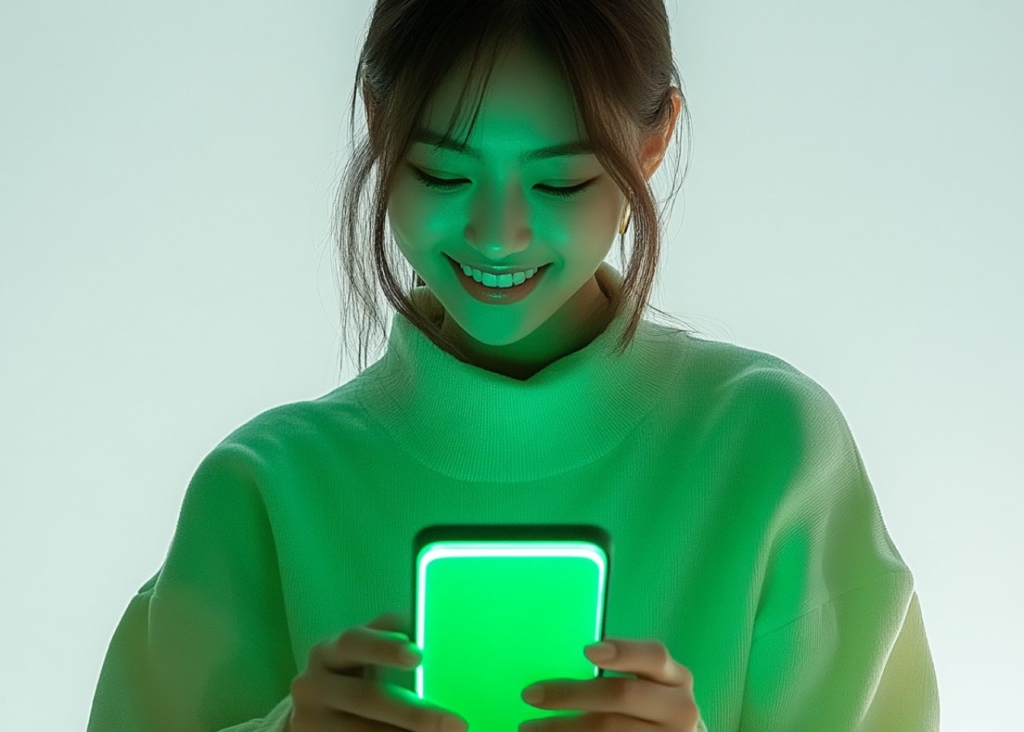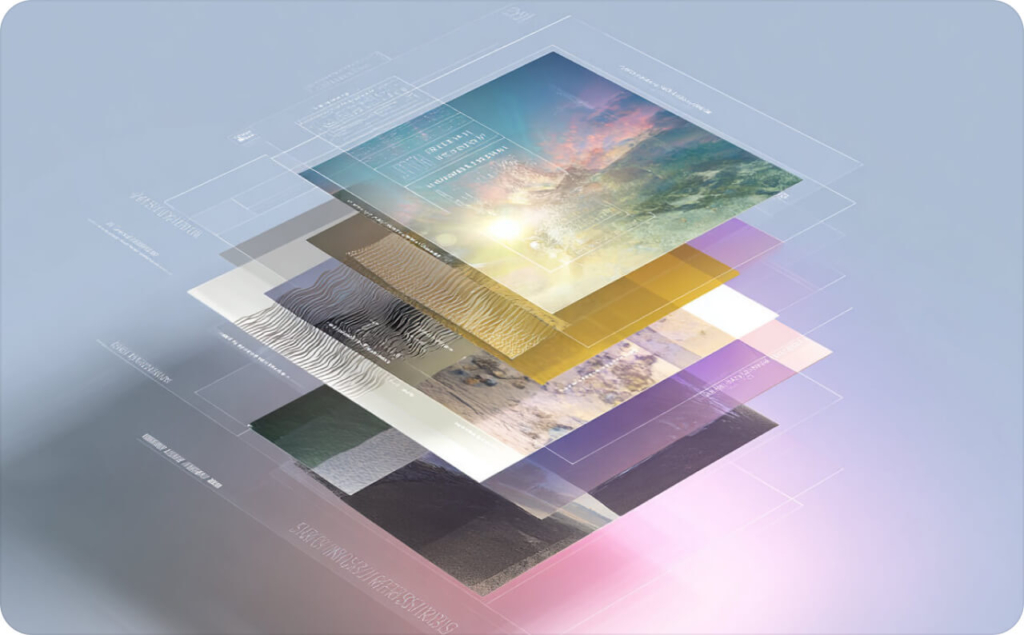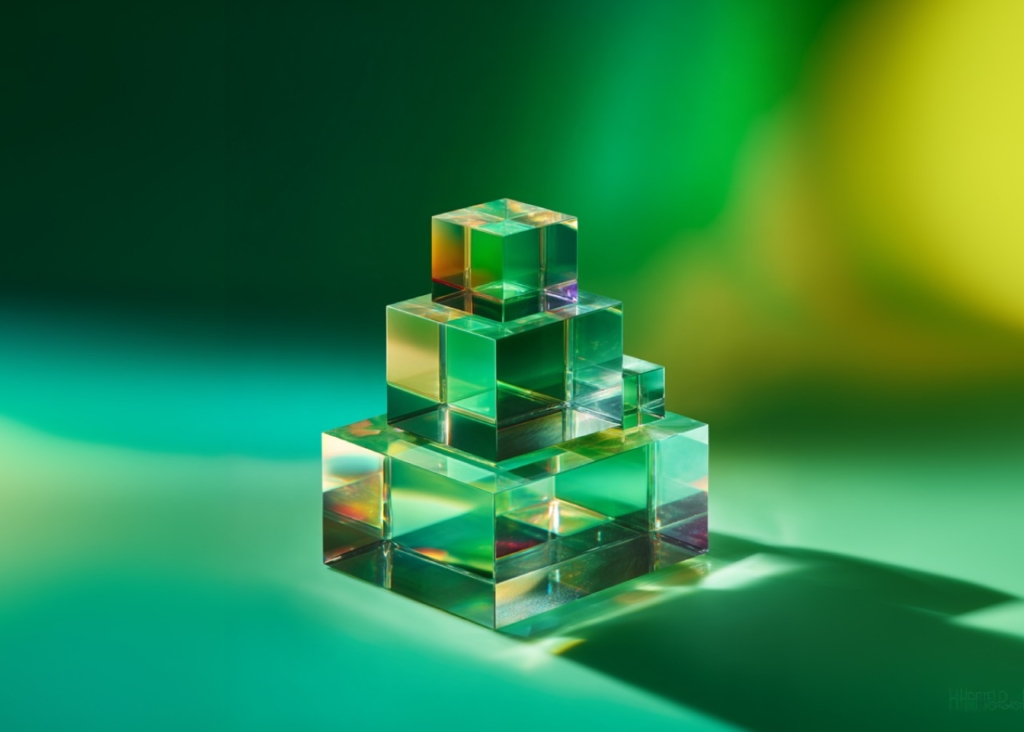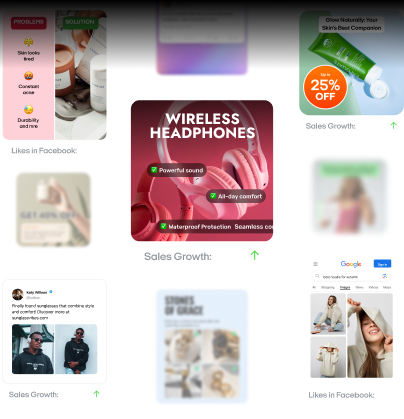How to use makeup ads to grow your beauty brand in 2025
Discover how top brands use AR, AI, and inclusive storytelling in makeup ads to grow their beauty business in 2025.
If your makeup ads haven’t evolved, you’re falling behind. Today’s consumers expect immersive, inclusive, and tech-forward campaigns. Brands like Fenty Beauty, Maybelline, MAC, and Dior Beauty stay ahead by blending their heritage with AR try-ons, AI-driven shade tools, and authentic, loyalty-building storytelling.
AR try-ons and AI recommendations aren’t just fads. They’re part of a broader move from static print to digital makeup advertising. According to Microsoft research, inclusive ads have a 23-point increase in purchase intent, proving that authentic representation drives financial success.
If you embrace this new reality and pair innovative beauty storytelling with an inclusive outlook, you’ll build stronger connections with your audience. In this article, we’ll examine exactly how your brand can pivot to consumer-centric storytelling.
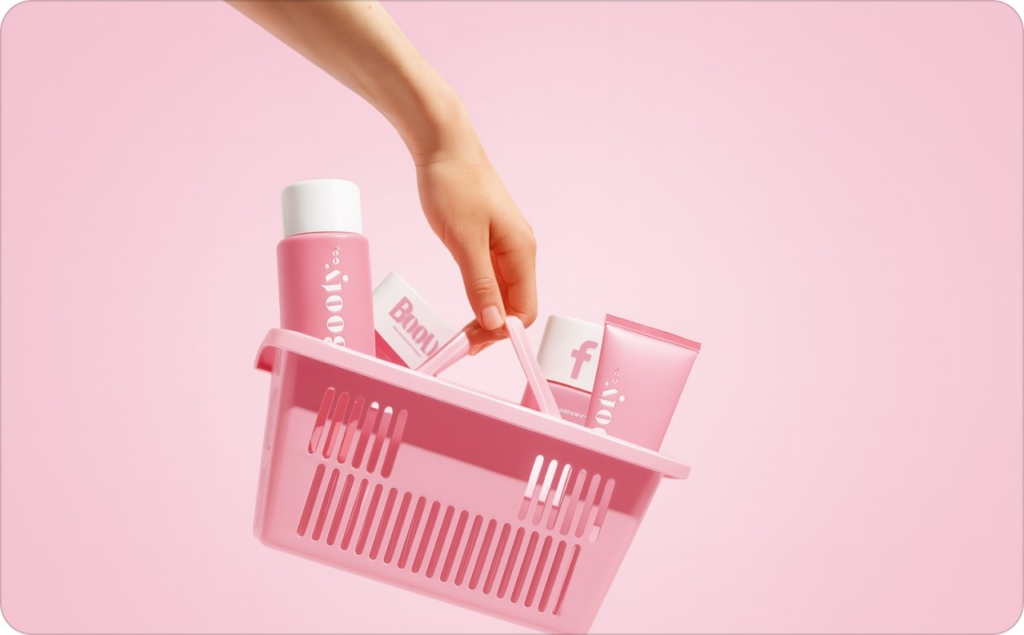
Why your makeup ads need to evolve — and what’s changing now
If your makeup ads haven’t evolved in the last five years, you’re letting modern opportunities slip through your fingers. Consumer expectations have shifted dramatically, and AR try-ons, along with short-form video, are no longer just fun extras but the way to make the best beauty ads. They’re vital parts of a digital revolution that’s transforming beauty marketing.
Today, shoppers expect more than glossy magazine shots. They want authentic, inclusive campaigns that invite them to connect, test, and explore products across social platforms. By recognizing these new demands, you’ll discover fresh ways to reinvent your approach and stay relevant in a changing world.
Early cosmetic ads relied on narrow ideals and simple print layouts. Now, forward-thinking brands prioritize broad representation, immersive storytelling, and friction-free discovery. This move to tech-forward inclusivity mirrors a generation that values diversity, personalization, and deep digital storytelling.
When you understand why these shifts occurred, you’ll gain the insights needed to refine your next big move in makeup advertising. Each change — from improved shade options to social-first video — reflects consumer desires for engagement and authenticity, and it’s your job to fulfill them.
As you read on, you’ll see how Fenty Beauty, Maybelline, MAC Cosmetics, and Dior Beauty have redefined modern makeup ads by breaking stereotypes, building real connections, and using innovative tools to stay ahead in an ever-changing beauty industry.
By learning from their experiences, you’ll build a stronger foundation for your digital transformation in today’s fast-paced market. Whether you choose AR features, inclusive shade ranges, or creative social media campaigns, the future of beauty ads depends on your willingness to adapt.
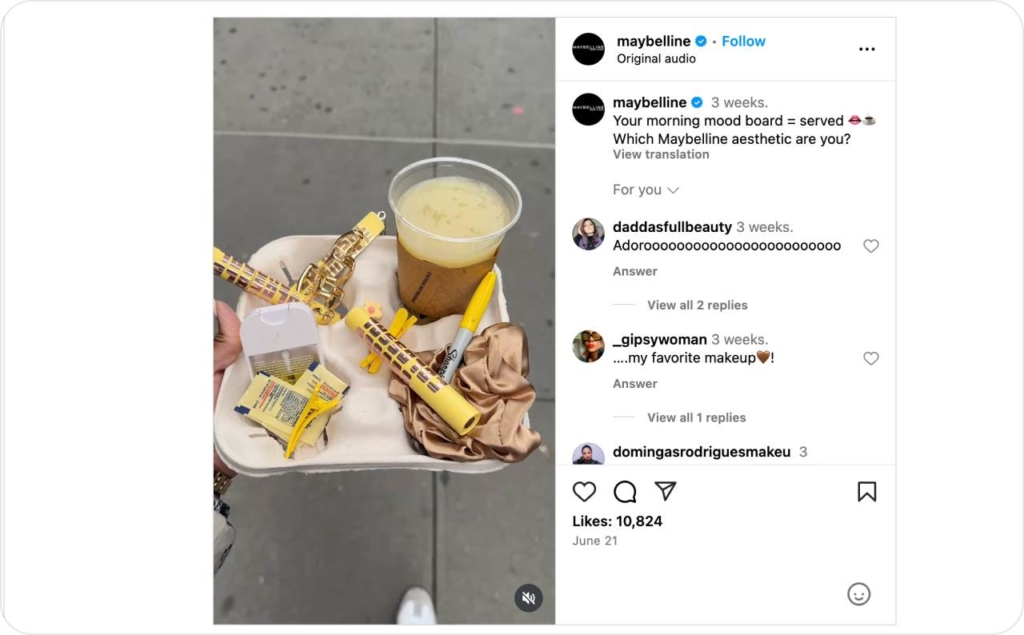
Photo source: @maybelline on Instagram
Real makeup ad examples you can learn from
These iconic makeup ad campaigns prove how creative storytelling, digital innovation, and a clear purpose can spark both excitement and real sales. By examining each case, you’ll see how to adapt their success to your brand, whether you’re aiming for inclusivity, viral engagement, pop culture flair, or immersive tech.
Make everyone feel seen like Fenty Beauty did
Fenty Beauty, launched by Rihanna, made waves by offering 40 foundation shades right from the start. Within just 40 days, the brand reportedly brought in $100 million in sales. That rapid growth came from embracing the idea that every skin tone deserves a perfect match.
When you focus on inclusive ads and spotlight real customers, you create a welcoming environment. Showcasing user before-and-afters also encourages people to share authentic testimonials, which boosts trust and loyalty.
If you want to replicate Fenty’s approach, start by looking at the gaps in your product range. Ask yourself how well you’re serving customers who often feel left out. Then make sure every marketing asset — from social posts to packaging — reflects this commitment to diversity.

Photo source: @fentybeauty on Instagram
Go viral like Maybelline with quick, fun videos
Maybelline took a legacy brand and pushed it into the TikTok spotlight with fast-paced transformations and catchy soundtracks. TikTok turned Maybelline’s Sky High mascara into a sell-out hit: creator “before-and-after” clips racked up 400 M+ views, sparking five retail sell-outs and a pace of one tube sold every 3 seconds on Amazon.
TikTok’s format favors eye-catching hooks, so short intros with a “wow” factor grab attention. Consistent hashtags and influencer partnerships also help viewers feel part of the conversation, motivating them to create their own videos.
If you want to follow Maybelline’s lead, focus on short-form content that shows instant results. Keep your tips and challenges easy enough for viewers to try at home. Monitor your watch time, shares, and user-generated videos. Those metrics show you where to refine your approach for maximum engagement.
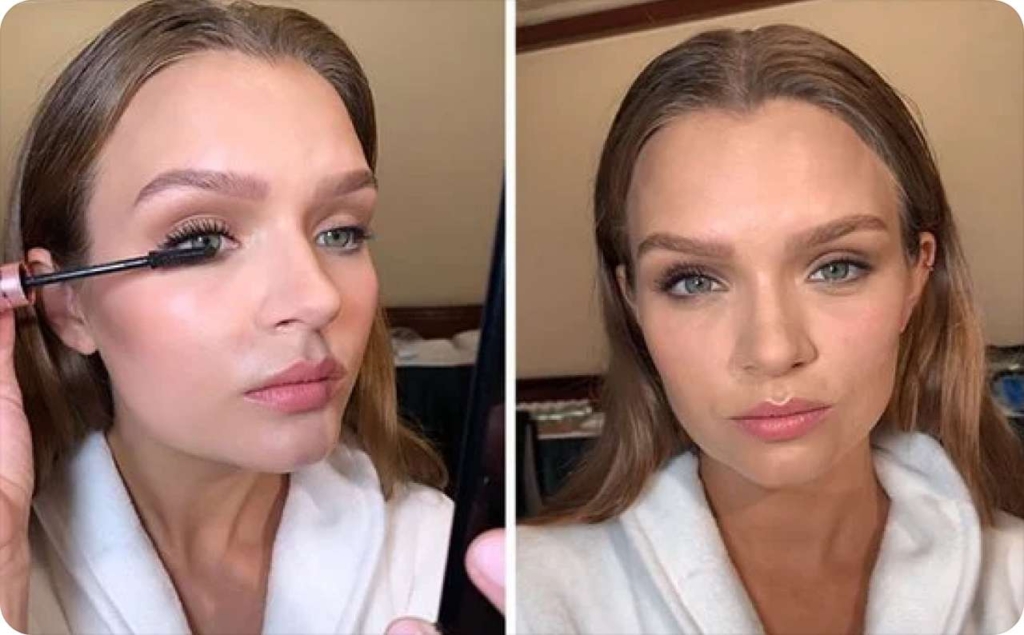
Photo source: L’Oréal Groupe
Turn pop culture into sales like MAC
MAC Cosmetics knows how to tap into pop culture. Its collection, dedicated to Selena Quintanilla, sold out within minutes, showing how the right celebrity tie-in creates urgency. Limited-edition lines and teaser campaigns keep fans engaged and drive demand through exclusivity and emotional connection.
To replicate this sense of buzz, consider which cultural moments or personalities align with your brand. Get creative with packaging and storytelling so your products feel special right from the first tease.
You don’t need a global superstar if you tap into something people are passionate about — like a TV show or a musical trend. The key is to deliver a cohesive experience that keeps fans guessing and buying.
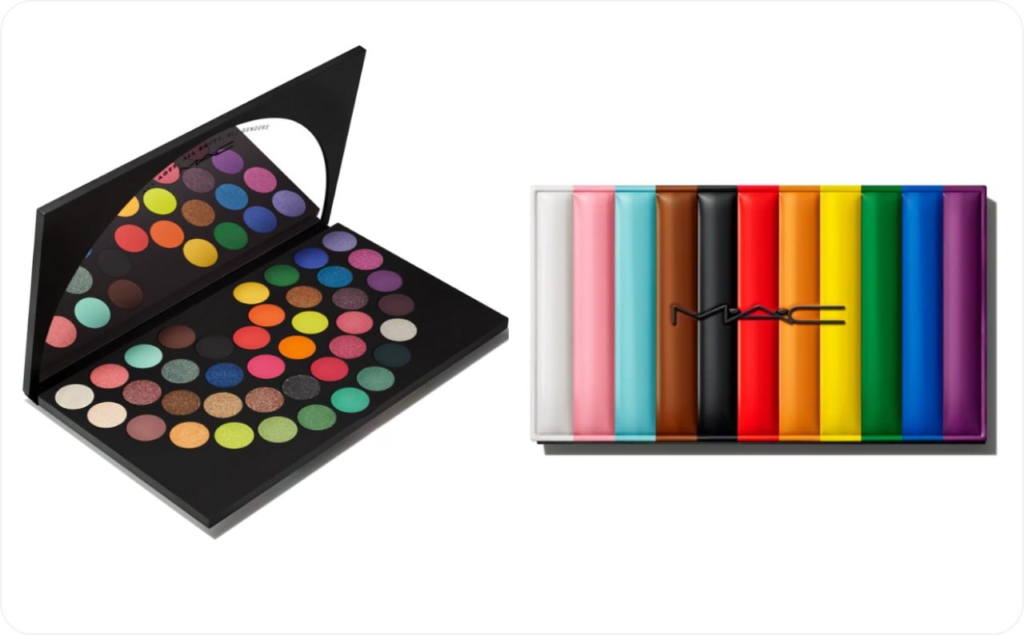
Photo source: MAC limited-edition offer ‘’40 Shades of Pride’’
Help customers try products online like Dior
Dior Beauty merges luxury with high-tech features. By offering AR try-ons, Dior lets shoppers virtually see how lipsticks or eyeshadows look before buying. The brand also pairs each digital tool with sleek tutorials that reinforce its timeless appeal.
If you aim to bring immersive tech to your ads, start small. Maybe launch an AR filter on Instagram or a virtual test on your website. Highlight the practical benefit — helping users avoid guesswork — and show them how easy it is to pick the perfect shade.
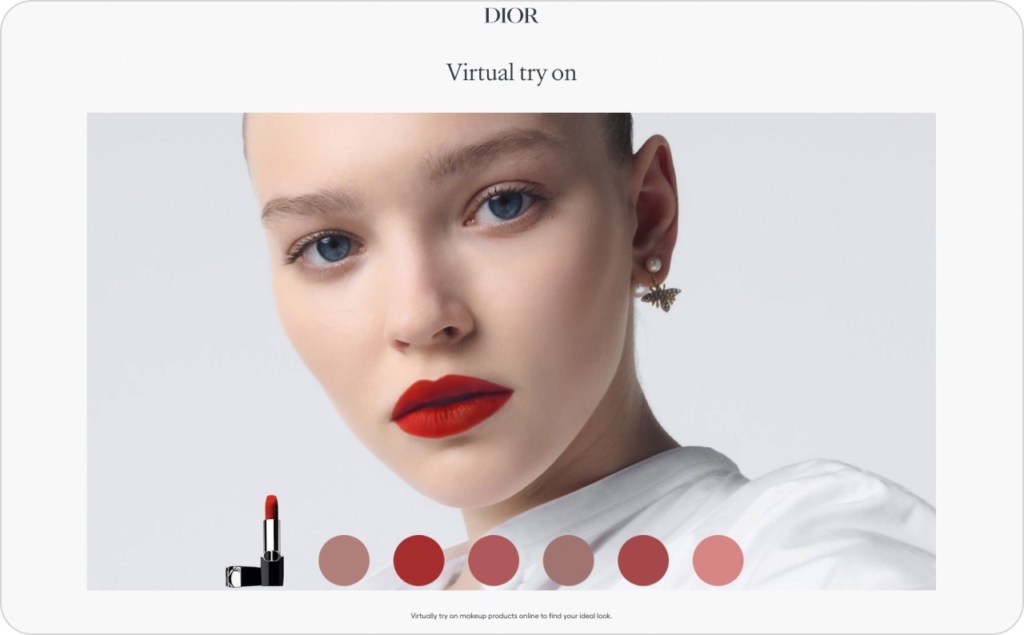
Photo source: Dior virtual try on
Use these ideas to build a better ad for your brand
These beauty case studies show how to balance storytelling and results. Fenty proves inclusivity drives profit. Maybelline turns quick content into viral wins. MAC leverages culture, and Dior builds trust with AR try-ons. Use what fits your audience and goals to stand out in a crowded market.
Effective makeup ad strategies that work great
Creating strong makeup ads today isn’t just about great visuals — it’s about engaging the right audience, telling real stories, and making every campaign count. Whether you’re launching a new product or scaling an existing campaign, these strategies will help you blend creativity with results.
Use emotional storytelling to build a connection
Emotional storytelling turns a simple ad into something people remember. You’re not just selling foundation — you’re showing how that product fits into someone’s daily life or personal transformation. Highlight real customer journeys, show diverse faces, and tell stories that reflect your audience’s values and challenges.
Ads focused on confidence, identity, or self-expression outperform product-only content. Use testimonial reels, day-in-the-life clips, or before-and-after stories. Track success with watch time, comment quality, and emotional sentiment using tools like Meta’s ad manager or social listening platforms.
Build trust with influencer partnerships and UGC
Influencer marketing helps make your brand feel human. But the key is creating UGC ads for social media with people who actually use your product, and reflect your audience. Whether they have 1,000 followers or a million, choose creators who align with your values, speak your audience’s language, and create unfiltered, relatable content.
User-generated content builds social proof. When your customers post selfies, unboxings, or tutorials, reshare them. Include creators of all backgrounds, ages, and gender expressions to actively break outdated beauty stereotypes and show that your brand is inclusive. To optimize your strategy, track conversion metrics from influencer swipe-ups or traffic spikes.
Make every second count with short-form video
Short-form video on platforms like TikTok, Instagram Reels, and YouTube Shorts is a must for makeup brands. These formats work especially well for quick transformations, mini product demos, and viral-style content that mirrors what users already love watching.
Use bold visuals, fast pacing, clear overlays, and trending sounds to grab attention. Start with a “wow” moment or emotional hook to stop the scroll. If your product allows it, integrate AR try-ons so viewers can try lipstick shades or eye palettes. These features can boost interaction rates and reduce returns by building trust.
Drive action with FOMO and scarcity
Scarcity sells. When customers think something’s limited, they act fast. Tactics like “only 100 left,” “48-hour flash deal,” or “exclusive drop” can drive urgency and boost conversions in real time.
FOMO marketing works best when it feels real. Use countdown timers, stock updates, and last-chance banners to build urgency. Partner with influencers to preview product drops — statements like “I got early access to this shade — it launches tomorrow” can spark immediate buzz and boost engagement.
Track results through sales spikes during campaign windows, increases in email signups before launches, or click-through rates from FOMO-driven creatives. Pair these tactics with social proof, like “sold out in 12 hours last time,” to build trust while nudging faster decisions.

Photo source: Kylie Cosmetics website
Keep your look consistent across every platform
If your ads look different everywhere, your brand loses clarity. That’s why visual consistency is key. Whether someone finds you on TikTok, Instagram, your website, or an email, they should instantly know it’s your brand.
Use the same colors, fonts, logo placements, and brand voice across all creative. This includes adapting layouts for square, vertical, or horizontal placements while keeping your visual identity intact. Create a style guide that covers your templates, filters, and messaging rules so your team and partners stay aligned.
Consistency builds brand recognition and makes your ads feel trustworthy. Over time, this improves ad recall and helps your campaigns perform better across platforms, even when targeting new audiences. And when users can recognize your brand in two seconds or less, your ROI improves without spending a dollar more.
When you combine these five strategies — emotional storytelling, influencer-driven trust, short-form engagement, urgency-driven tactics, and consistent visuals — you’re not just creating content. You’re building a beauty brand that connects, converts, and grows.
Where should you run your makeup ads
Choosing where to run your makeup ads starts with setting clear goals. Whether you want quick conversions, long-term brand awareness, or viral buzz, each digital platform offers different strengths. Match platform capabilities to your campaign objectives to spend smarter and reach your ideal audience effectively.
Use Instagram to show off your brand and sell fast
Instagram suits polished visual storytelling and short-form shopping flows. If you offer a range of products, like multiple lipstick shades, carousel posts let you showcase them in one swipe. It’s ideal for mid-range budgets since you can repurpose content from Stories, Reels, or even behind-the-scenes shoots.
Keep a close eye on profile clicks, product link taps, and saves to track performance. You can also adapt the same video in vertical format for Reels, ensuring your visuals stay consistent across the feed.
If your makeup line focuses on vibrant palettes or seasonal trends, Instagram’s photo-centric nature puts them in the spotlight. You can test your content by creating two variations — maybe one featuring a model tutorial and another with a flat-lay — and see which drives higher engagement.
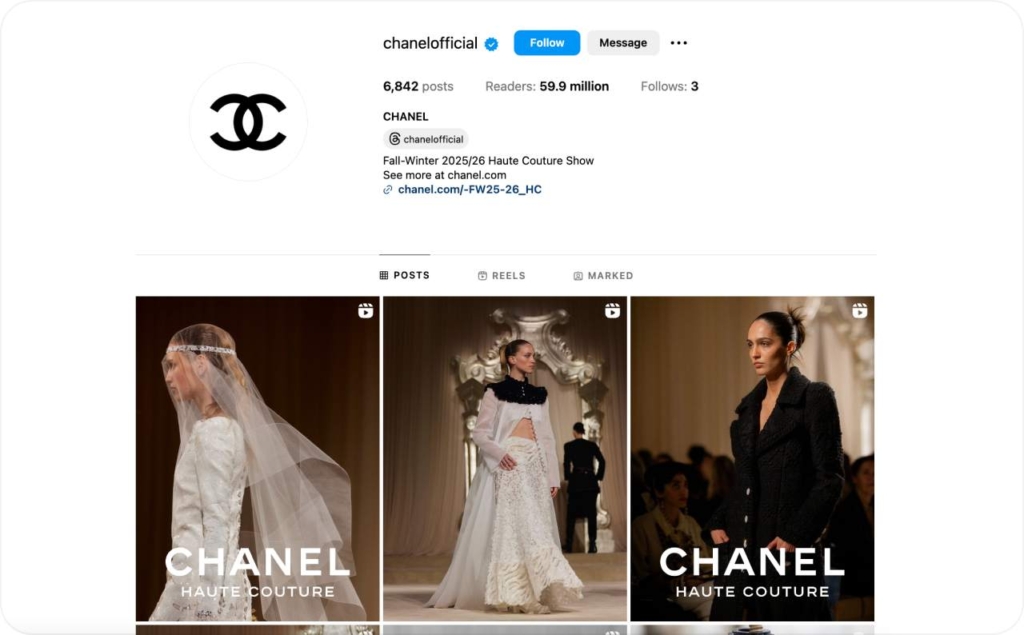
Photo source: @chanelofficial on Instagram
Try TikTok to go viral and reach new people fast
If your brand leans into bold colors or playful looks, TikTok is ideal for quick inspiration. The platform’s algorithm favors relatable hooks and trending sounds that drive curiosity. It’s perfect for product drops or transformation clips tied to TikTok beauty trends. Track views, shares, and profile visits to measure connection.
Testing on TikTok is easy, post two short videos in different styles like a mini-challenge versus a step-by-step tutorial and measure watch times or comments. Partnering with an influencer who speaks your audience’s language can also stretch your content further without breaking the bank.
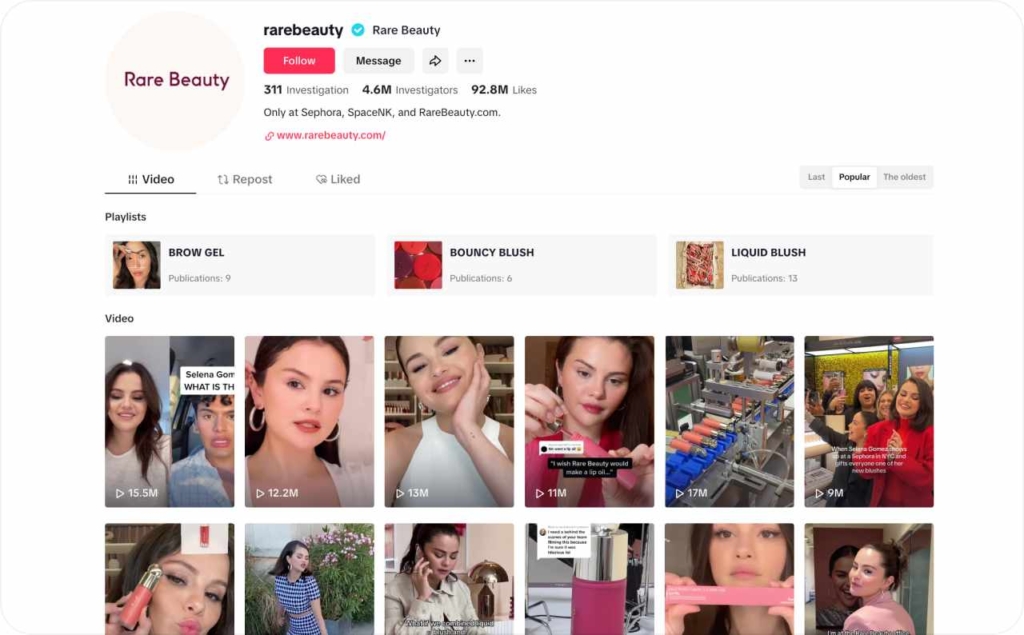
Photo source: @rarebeauty on TikTok
Use YouTube to teach, build trust, and keep people watching
When explaining complex products, YouTube is your go-to. Long video tutorials build trust by showing detailed steps, from skincare routines to eyeshadow layering. Track watch-through rates and subscriber growth — if viewers stay engaged, you’re building a stronger brand relationship.
You can also repurpose short teaser clips on Instagram or TikTok to funnel viewers into the full YouTube tutorial. This omnichannel approach helps you reach different segments of your audience with content tailored to each platform’s format.
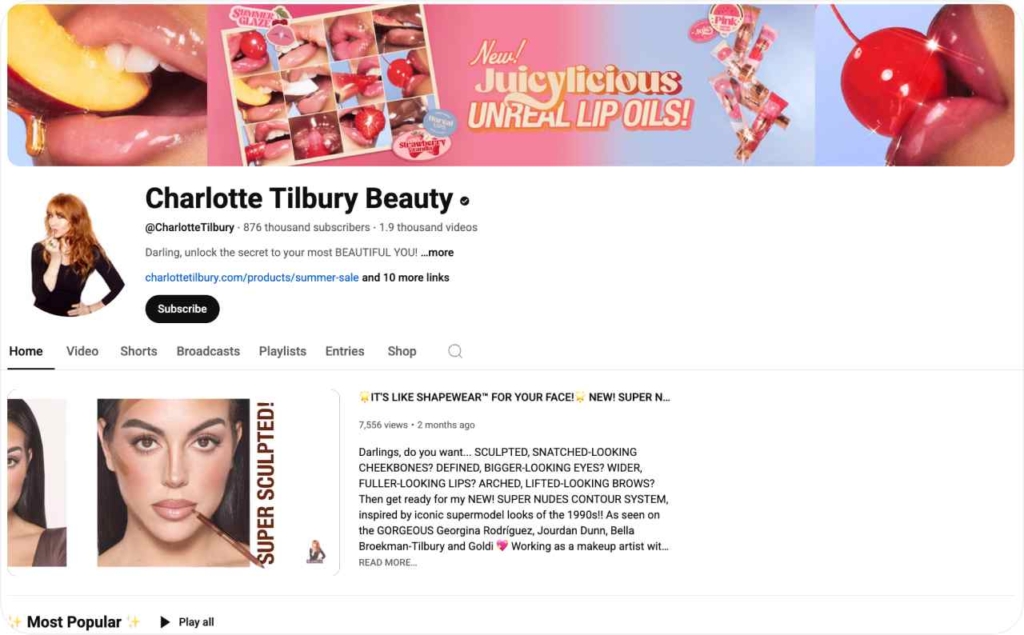
Photo source: @CharlotteTilbury on YouTube
Turn Pinterest and in-store displays into long-term wins
Pinterest offers evergreen discovery, your pins can drive clicks and saves for months or even years. It’s great for smaller teams, since one strong visual can keep sending visitors to your product pages without daily upkeep. Consider adding shoppable pins, so curious viewers can buy the exact look they see.
Offline channels can extend your reach, too. Printed displays or in-store posters create a consistent brand feel, especially when you include QR codes that link to tutorials or AR interactive ads. This easy bridge between physical and digital keeps your brand top-of-mind long after someone leaves the store.
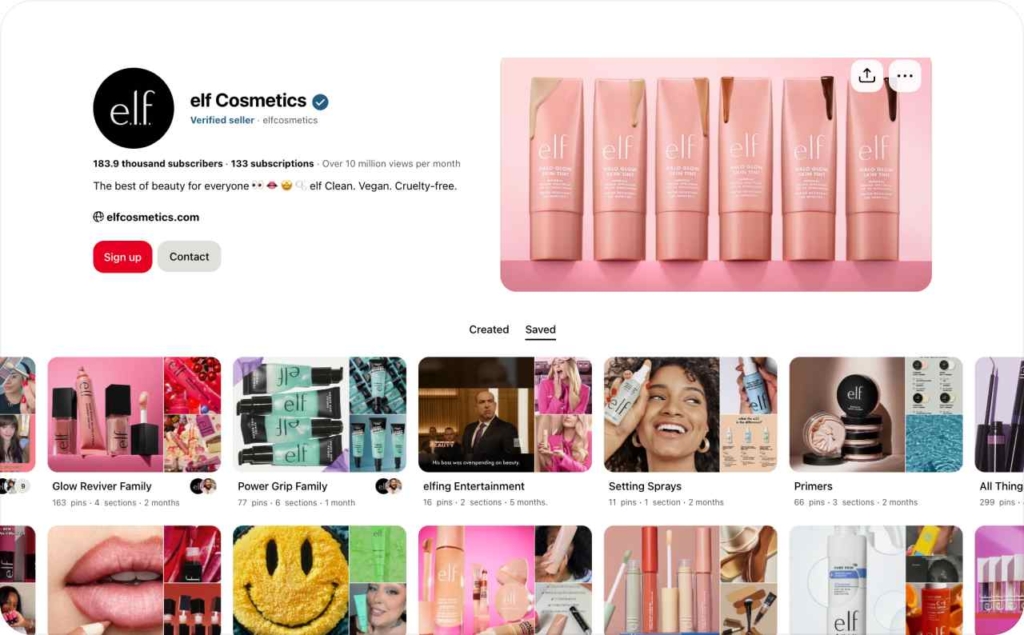
Photo source: @elfcosmetics on Pinterest
Use AR try-ons and tap-to-shop videos to wow people
If you want to stand out with immersive content, AR try-ons let users test different shades instantly. This boosts buyer confidence and can drastically reduce returns. Shoppable videos also offer a direct path to purchase. Show a product demo, then let viewers tap on items right in the clip.
If you have the bandwidth, try creating two versions of the same interactive video: one with upbeat music and quick cuts, another with a slower, more detailed approach. Watch click-through rates, cart additions, and user feedback to determine which style boosts your platform ROI.
By matching your makeup ads to the right platform and ad formats, you’ll tailor each campaign to fit both your brand identity and your customers’ expectations. A little testing goes a long way — once you see which channel yields the best engagement, you’ll have a clearer blueprint for future success.
The future of makeup ads and what you should focus on next
The future of makeup ads blends AI personalization, sustainability, and an omnichannel approach. As tech evolves, next-generation tools like AI advertisement generator shade matching, and virtual try-ons boost customer engagement by delivering hyper-targeted content. These innovations not only drive conversions but also encourage ethical choices and reduce waste, marking a new era in sustainable beauty marketing.
Brands now use AI in beauty advertising for smart matching and data-driven pricing. Others focus on sustainable makeup campaigns, cutting packaging, and sourcing responsibly. With 60% of online shoppers favoring eco-conscious brands, showing true environmental commitment is no longer optional — it’s essential.
To stay competitive, build future makeup ads that mix personalization with eco-friendly principles. Track brand sentiment and AR try-on usage to measure impact. Follow social media trends and align your message with your values. Balancing digital innovation with ethical action keeps your brand ahead in the beauty industry.
Also recommended
